According to the CBSE Syllabus 2023-24, this chapter has been renumbered as Chapter 8.
CBSE Class 10 Science Chapter 9 Heredity and Evolution Notes
Introduction
Heredity refers to the passing of characteristics from one generation to the next. Evolution is defined as the gradual process by which a simple life form leads to the development of complex organisms over a period of time, spanning several generations.
Here in this chapter, we will learn about the mechanism by which variations are created, the rules of heredity determining their pattern of inheritance, and how the accumulation of these variations leads to evolution.
Heredity
The transfer of traits from one generation to the next is termed heredity. Genes are the functional units of heredity that transfer characteristics from parents to offspring. Genes are short stretches of DNA that code for a specific protein or RNA.
Genetics is the branch of biology that deals with the study of genes, heredity and variations.
Sexual Reproduction
- The mode of reproduction involves two individuals; one male and one female.
- They produce sex cells or gametes, which fuse to form a new organism.
For more information on Heredity and Evaluation, watch the below videos

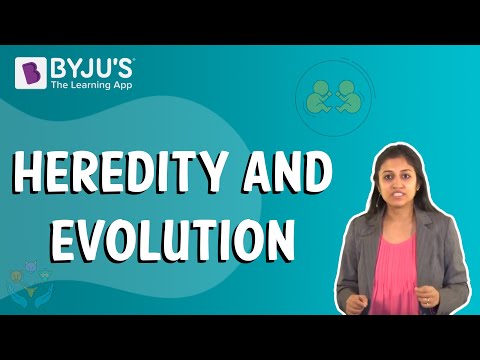
Genes
- Gene is the functional unit of heredity.
- Every gene controls one or several particular characteristic features in living organisms.
Read more: Genes
Heredity
The process by which the features of an organism are passed on from one generation to another is called heredity.
- The process is done by genes, which define the characters in the organism.
For more information on Introduction to Heredity and Evaluation, watch the below video

To know more about Heredity, visit here.
Mendel’s Work
- Gregor Johann Mendel, known as the ‘Father of Genetics’, was an Austrian Monk who worked on pea plants to understand the concept of heredity.
- His work laid the foundation of modern genetics.
- He made three basic laws of inheritance – The Law of Dominance, The Law of Segregation and The Law of Independent Assortment.
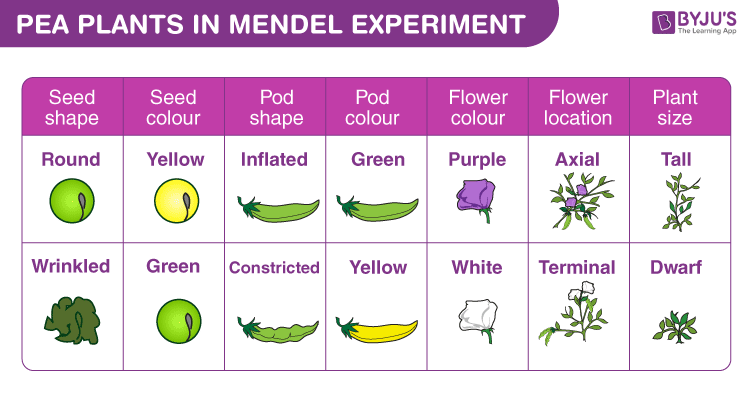
Dominant Traits
The traits that express themselves in an organism in every possible combination and can be seen are called Dominant traits.
- In Mendel’s experiment, we see that the tall trait in pea plants tends to express more than the short trait.
- Therefore, the tall trait of the plant is said to be dominant over the short trait.
Recessive Traits
A trait which is not expressed in the presence of a dominant allele is known as recessive.
- So, a recessive character/trait is present in an organism but cannot be seen if a dominant allele exists.
To know the difference between Dominant traits and Recessive traits, visit here.
Monohybrid Cross
- When only one character is considered while crossing two organisms, then such a cross is known as a monohybrid cross.
- The ratio of characters arising out of this cross at F2 generation is called the monohybrid ratio.
- E.g., If a tall plant (TT) is crossed with a dwarf plant (tt), we get 3 tall:1 short plant at the end of the F2 generation.
- So, 3:1 is a monohybrid ratio.
- Here, the height of the plant is considered at a time.
Below is an example of a monohybrid cross between a true-breeding pea plant with green pods (GG) and yellow pods (gg). Here, the green colour of the pod is the dominant trait. Hence, in the F1 generation, all plants contain green pea pods.
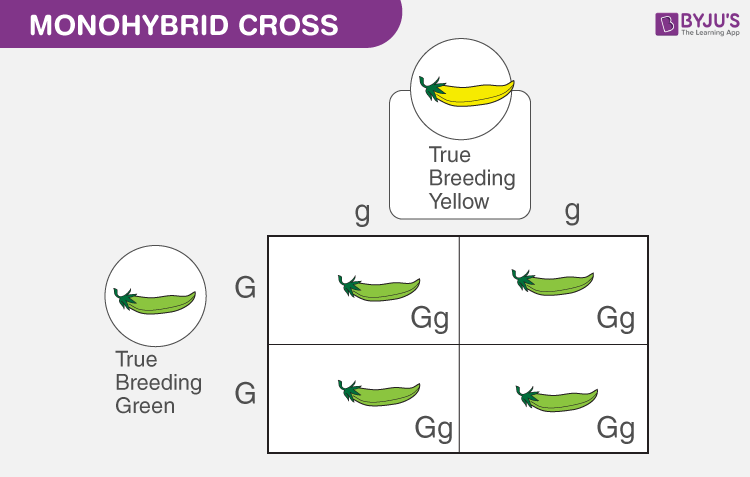
To know more about Monohybrid cross, visit here.
Dihybrid cross
- When two characters are considered while crossing two organisms, then such a cross is known as a dihybrid cross.
- The ratio of characters arising out of this cross at F2 generation is called the dihybrid ratio.
- E.g., If a plant with round and green pea is crossed with a plant with wrinkled and yellow pea,
- The first-generation plants would all have round and green peas.
- On crossing the same for an F2 generation, we would observe four combinations of characters in the ratio of 9:3:3:1.
- Thus, 9:3:3:1 is the dihybrid ratio.
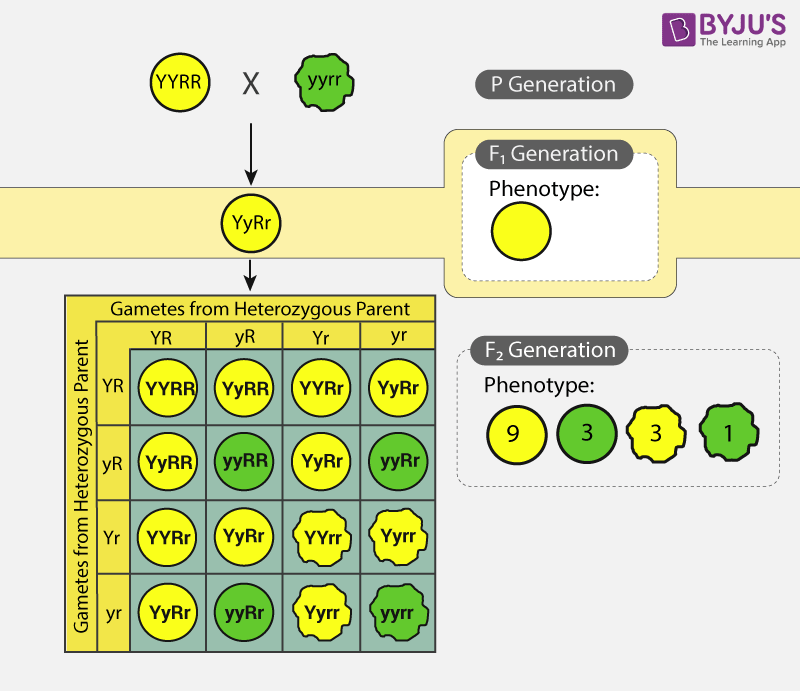
To know more about the Dihybrid Cross, visit here.
Inheritance
In Biology, inheritance pertains to the transfer of traits from one generation to another.
To know more about Mendel’s laws of inheritance, visit here.
Laws of Mendel
Law of Dominance says that a gene has two contrasting alleles and one always expresses itself in the organism.
It is called the dominant gene, and it expresses in any possible combination.
Law of Segregation says that traits get segregated completely during the formation of gametes without any mixing of alleles.
Law of Independent Assortment says that the traits can segregate independently of different characters during gamete formation.
For more information on Segregation, watch the below video

Sex Determination
- The process of determining the sex of an individual based on the composition of the genetic material is called sex determination.
- In different animals, the sex of an embryo is determined by different factors.
- In humans, sex determination happens on the basis of the presence or absence of the Y chromosome.
- XX is female, and XY is male
- An ovum always contains an X chromosome.
- An ovum, upon fusion with the Y-containing sperm, gives rise to a male child and upon fusion with the X-containing sperm, gives rise to a girl child.
To know more about Sex determination, visit here.
Traits
Traits are characteristic features of an organism, manifested in a physical form that is visible or in a physiological aspect of the organism.
Acquired Characters
- The traits that are acquired by an organism over the period of its lifetime are termed acquired characteristics.
- These characteristics that are not passed on to the DNA of germ cells do not get transferred to the next generation. E.g. loss of muscles and less weight due to starvation, loss of limb or tails due to injury, etc.
Inherited Characters
- The traits that are inherited from the parents are called inherited characters.
- These traits always get transferred to the next generation but depending on the dominance or recessiveness, they may or may not be expressed.
- Examples are height, skin colour and eye colour.
To know more about Acquired and Inherited Traits, visit here.
Variation
Variation is the measure of the difference between individuals of the same species. Offspring is not identical to parents, there exist some variations. Each individual in a population differs from the others. Recombination and mutation are the main causes of variations.
Sexually reproducing organisms show great variation among individuals of a species and the long-term accumulation of variations plays a significant role in evolution. The selection of variants by environmental factors is one of the driving factors of evolutionary processes.
Genetic Variations
The differences in the DNA sequences among every organism leading to the diverse gene pool are called genetic variations. These differences lead to different/varied physical characters or biochemical pathways.
For more information on Variation – Heredity and Evaluation, watch the below video

To know more about Genetics, visit here.
Natural Selection
- It is the phenomenon by which a favourable trait in a population of a species is selected.
- Changing natural conditions exert equal pressure on all the existing species.
- The species/organisms which are better adapted to the changing conditions survive and reproduce i.e. selected by nature and species/organisms which cannot adapt perish i.e. rejected by nature.
Speciation
Genetic Drift
Natural selection can play an important role in deciding the traits that survive in a population. However, random fluctuations in gene variants are seen on many occasions. This phenomenon is known as genetic drift. Thus, genetic drift is a change in the frequency of an existing allele in a small population.
Genetic drift may cause a gene variant to disappear from the population and thus reduce genetic variation.
Speciation
It is the process of formation of a new species from existing ones due to several evolutionary forces like genetic drift, isolation of populations, natural selection, etc. Speciation leads to diversity in the ecosystem and the diversity and diversity lead to evolution.
For more information on Speciation, watch the below video
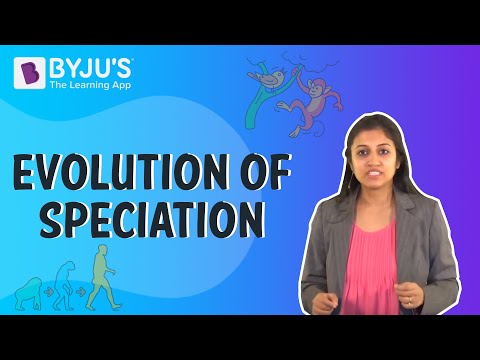
To know more about Speciation and evolution, visit here.
Gene Flow
Gene flow is the transfer of genes from one population to the next. This occurs due to migration or the introduction of organisms to a new population. This results in the change in gene frequencies of a population.
Population
A population is a community or a group of animals, plants or any living organism that can reproduce with each other and have fertile, viable offspring.
Charles Darwin
- Charles Darwin, also called the “Father of Evolution”, was an English Naturalist and Biologist.
- Five years of the expedition in a ship called HMS Beagle to Galapagos Island helped him write his theory of evolution.
- In 1859 he published a book called Origin of Species, in which he put his theory of evolution in detail.
To know more about Charles Darwin’s Contribution to the Theory of Evolution, visit here.
Evolution and Fossils
Evolution
Evolution is a tangible change in the heritable characteristics of a population over several generations. These changes can give rise to a new species or the species might change themselves to become better adapted to the surrounding environment.
Read more: Evolution
Origin of Species
- After a successful expedition on HMS Beagle, Charles Darwin wrote a book on what he observed on the Galapagos Islands.
- In the book named ‘The Origin of Species, he wrote a detailed theory of evolution which was mostly based on Natural Selection.
Origin of Life – Haldane’s Theory
- JBS Haldane was a British Scientist who theorized that life originated from organic and lifeless matter.
- His theory was proved to be correct by Urey and Miller’s experiment.
- It was called the theory of abiogenesis.
Evolutionary Evidence – Fossils
- There are plenty of pieces of evidence to support the theory of evolution.
- Fossils happen to be the biggest of them.
- Fossils are the preserved remains of ancient animals or plants that died millions of years ago.
- The fossils help us understand the anatomy and even physiology of these organisms and understand how evolution worked and led to the formation of organisms that we see today.
Formation of Fossils
Fossils are important pieces of evolutionary evidence and are formed by the following steps:
- Organisms die, and they get buried in mud and silt.
- The soft tissues of the body get quickly leave behind the hard bones or shells
- Over time sediments build over it and harden into rock
- As the bones decay, minerals seep in to replace the contents cell by cell, a process called petrification
- If bones decay completely, it leaves behind the cast of the animal.
To know more about Fossils, visit here.
Evolutionary Relationships
Evolutionary relationships of animals can be deduced by studying the homologous organs and analogous organs.
Homologous organs are those which have a similar structure but different function
- Wings of birds and forelimbs of mammals: have similar structures but are modified to suit different functions.
- A tendril of the pea plant and spine of the barberry plant: both are modified leaves but perform different functions.
Analogous organs are those which have a similar function but a different structure and origin too
- Wings of bats, birds and wings of insects: both are used for flying, but structurally are very different.
- Leaves of opuntia and peepal: both perform photosynthesis, but leaves of Opuntia are modified stems, whereas peepal leaves are normal leaves.
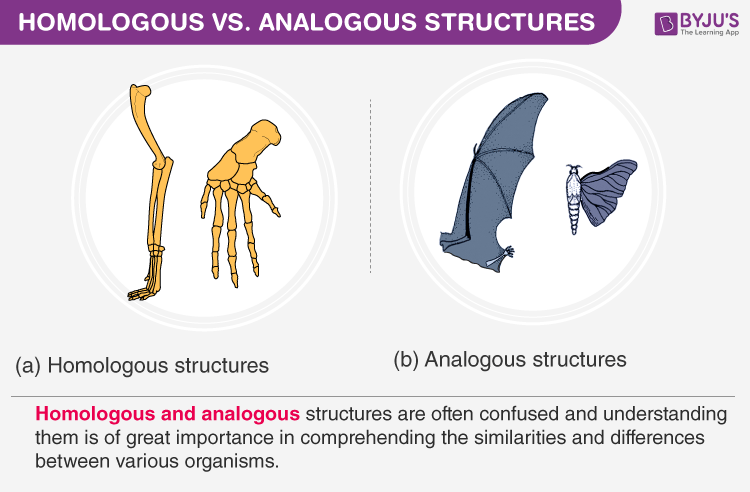
To know more about Fossils’ Evolutionary Relationships, visit here.
Evolution by Stage
- Evolution is a slow process and does not happen overnight.
- There are several stages in the evolution of almost every animal that we see today.
- Complexities do not evolve suddenly but evolve bit by bit and may have limited use at certain stages.
- This gradual evolutionary process is called evolution by stages.
To know more about Evolution by Stages, visit here.
Artificial Selection
- Sometimes a single species can evolve into several different species due to artificial selection.
- E.g. the cabbage family. A single ancestor in the cabbage family gave rise to several different species due to the selection of different traits.
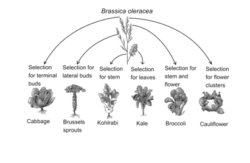
Molecular Phylogeny
- The evolutionary relationship among different biological species is called phylogeny.
- It gives rise to an evolutionary tree.
- In molecular phylogeny, these relationships are studied at the hereditary molecular level, mainly using DNA sequences.
- It involves the analysis of DNA composition and gene comparison between different species.
Human Evolution
- Humans are known to belong to the primate family.
- Humans today have a very close genetic connection to chimps and other primates.
- While the complete evolutionary process of Humans from Primates is still a mystery, a larger picture of human evolution has been formed.
- Some of the ancestors of Humans include Dryopithecus, Ramapithecus, Australopithecus, Homo erectus, Homo sapiens neanderthalensis, Cro-magnon man, and finally, us, the Homo sapiens.
- Human evolution traces back to Africa. Then they migrated all over the world.
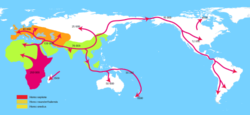
For more information on Human Evolution, watch the below video
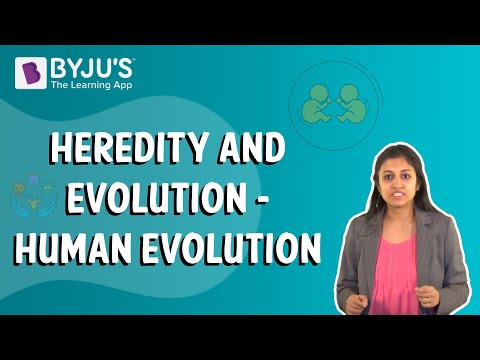
To know more about Human Evolution, visit here.
Also Check:
- CBSE Class 10 Science Chapter 8 How Do Organisms Reproduce Notes
- NCERT Solutions for Class 10 Science Chapter 9 Heredity and Evolution
- NCERT Exemplar Class 10 Science Solutions for Chapter 9 – Heredity And Evolution
Frequently Asked Questions on CBSE Class 10 Science Notes Chapter 9 Heredity and Evolution
What is evolution?
The development of plants, animals, etc., over many thousand years from simple forms to complex advanced forms.
What does the Law of Segregation state?
The law of segregation states that each individual that is a diploid has a pair of alleles (copies) for a particular trait.
What is meant by natural selection?
The process through which organisms adapt and change themselves in huge populations is known as natural selection.


Comments